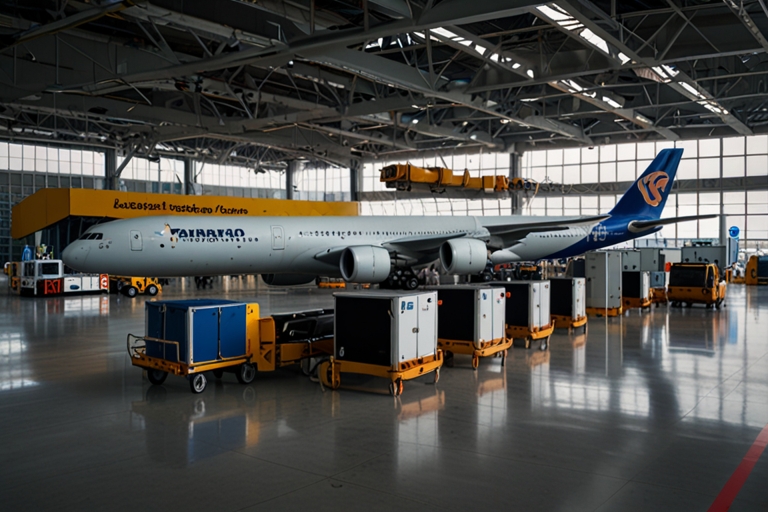Business
When Should Your HOA Consider Hiring a Property Management Company?

Key Takeaways:
Managing a homeowners association (HOA) requires much time and expertise. A property management company might be the solution to ensure efficient operations. This article delves into how hiring such a company can benefit your community.
Introduction
Homeowners associations (HOAs) are critical in managing community living, maintaining property, and protecting property values. However, as communities expand and expectations rise, the responsibilities of an HOA board can become overwhelming. Enter the property management company: a professional service provider that can bring organization, expertise, and efficiency. But how do you know when it’s time to make that call? This article explores the factors and signs that suggest your HOA might benefit from hiring a property management company.
Recognizing the Need for Professional Help
One of the first steps in determining whether your HOA management needs external support is recognizing the signs of strain. If your board members consistently overwhelm the community’s demands or if crucial responsibilities are being neglected, it might be time to seek help. Such signs include delayed maintenance projects, financial mismanagement, dwindling community participation, or challenging-to-understand legal compliances. With these warning signs, a property management company can offer the expertise to address these issues more efficiently.
Benefits of Hiring a Property Management Company
Enlisting a property management company comes with a host of advantages. These professionals bring a breadth of experience that can streamline operations and ensure community needs are met competently. They have expertise in various domains, such as maintenance coordination, financial management, legal compliance, and community communication, allowing the HOA board to focus on strategic decisions. Additionally, a property management company can play a pivotal role in enhancing the overall resident experience, ensuring that the community is well-maintained and that resident inquiries and concerns are addressed promptly.
Considering Scale and Complexity
The size and complexity of your community can significantly influence the decision to hire a property management company. Larger communities with extensive amenities such as pools, parks, and clubhouses have more intricate management needs that require daily oversight. In such scenarios, a dedicated professional team can handle routine tasks and manage complex projects efficiently, leaving board members to make higher-level decisions. Conversely, for smaller communities with less complexity, the decision may be based more on the availability of volunteer board member time and expertise. Ultimately, understanding the specific demands of your community will guide this decision.
Financial Management Expertise
Sound financial management is critical to any community’s success. From budgeting and reserve fund analysis to handling dues and ensuring accurate financial reporting, the financial responsibilities of an HOA can be daunting. A property management company provides significant support in this realm. These companies are equipped with professionals who possess financial acumen to ensure proper bookkeeping, timely reporting, and strategic financial planning. Additionally, they bring experience handling late payments and setting up cost-effective reserve studies, which are crucial for maintaining a financially healthy community.
Legal Compliance and Risk Management
Legal considerations are integral to HOA management, encompassing everything from fair housing laws and contractual obligations to insurance requirements. Staying abreast of these regulations can be challenging for volunteer boards, leading to costly consequences if mismanaged. A property management company is proficient in local and state laws affecting HOAs and can ensure your community remains compliant. From revising governing documents to addressing complex legal issues, these experts mitigate risks, safeguarding your community from potential legal pitfalls.
Enhancing Community Relations
A harmonious and engaged community is vital for any HOA’s long-term success. This involves effective communication, timely dispute resolution, and organizing community events. A property management company excels in these areas by acting as an unbiased mediator and providing clear and professional communication channels. Their experience in community relations can lead to smoother interactions between board members and residents, enhancing the overall sense of community and belonging.
Time and Resource Management
Managing a community requires substantial time and effort, which, for volunteer board members, means juggling these responsibilities with personal and professional commitments. Hiring a property management company can relieve this burden by efficiently handling day-to-day operations and executing board decisions. This allows board members to focus their limited time on strategic visioning and policy setting rather than operational challenges. Furthermore, the company’s established vendor relationships often result in better service and cost savings for the community.
Conclusion
Choosing a property management company is an essential decision for any HOA. While the process may seem daunting, understanding when necessary can significantly benefit the community. By assessing the demands on board members, the size and complexity of the community, financial management needs, and the importance of strong community relations, HOAs can make an informed choice that best fits their needs. A well-chosen property management company enables HOA board members to provide leadership and vision for the community, protecting and enhancing property values for all residents.
Business
The Importance of Reliable Raw Material Procurement in Brick Manufacturing

Key Takeaways:
Reliable raw material procurement is essential for maintaining consistent quality and sustainability in brick manufacturing. By focusing on sourcing key materials and supply chain efficiency, manufacturers can ensure both product excellence and economic viability.
Table of Contents:
- Introduction
- Importance of Reliable Procurement in Brick Manufacturing
- Ensuring Supply Chain Efficiency
- Maintaining Material Quality Assurance
- Balancing Cost-Effectiveness with Quality
- Integration of Sustainable Practices
- Conclusion
Introduction
Brick manufacturing represents a cornerstone of the construction industry, renowned for its durability, versatility, and aesthetic appeal. The quality of bricks depends heavily on the raw materials used in their creation. Therefore, reliable raw material procurement plays a critical role in ensuring the consistency and integrity of the final product. This article explores the various facets of raw material procurement and its significance in maintaining superior standards within the industry.
Importance of Reliable Procurement in Brick Manufacturing
The process of brick manufacturing begins with selecting high-quality raw materials. Clay, shale, and specific additives form the foundation of brick production. Reliable procurement practices ensure that materials meet the necessary physical and chemical characteristics to produce bricks of specified quality. Inconsistent or subpar materials can reduce the structural integrity of bricks, affecting their performance in construction. Therefore, a well-managed procurement strategy is integral to maintaining the quality and reliability of bricks produced. Furthermore, reliable procurement minimizes disruptions in production schedules, ensuring that manufacturing processes remain efficient and cost-effective. Establishing strong relationships with reputable suppliers and conducting regular quality assessments are essential steps in achieving procurement reliability.
Ensuring Supply Chain Efficiency
Supply chain efficiency is a crucial component of effective raw material procurement. A streamlined supply chain allows manufacturers to obtain essential materials promptly and cost-effectively, directly impacting overall production efficiency. For successful implementation, it is vital to establish clear communication channels between suppliers and manufacturing facilities. Organizations must also consider logistics and transportation costs, optimizing routes to minimize fuel consumption and emissions. As a result, properly managed supply chain efficiency promotes the sustainability of brick manufacturing. One benefit not to be overlooked is maintaining optimal inventory levels through timely procurement decisions. This strategy can guarantee that the required components are available when needed while drastically lowering storage expenses. Additionally, the use of advanced technologies like IoT can improve planning accuracy and inventory management, further contributing to efficient supply chains.
Maintaining Material Quality Assurance
Quality assurance is the backbone of any successful brick manufacturing process. Ensuring that raw materials consistently meet the standard requirements is essential in delivering high-quality bricks. Industrial insulation is crucial in this context, providing insight into the product’s ability to withstand varying environmental conditions. Implementing rigorous quality control measures at the supplier’s site and within the manufacturing facility is essential for maintaining product integrity. Routine laboratory testing, including chemical analysis and mechanical testing, helps ascertain that materials are free from impurities and conform to industry specifications. These checks prevent potential defects in the final product and guarantee customer satisfaction. As part of the quality assurance process, organizations can implement certification programs to reassure both suppliers and clients of material reliability.
Balancing Cost-Effectiveness with Quality
The challenge of balancing cost-effectiveness with uncompromised quality is central to the brick manufacturing industry. Procuring raw materials at competitive prices enables manufacturers to maintain profitability while producing affordable bricks for the market. However, cutting costs should never compromise quality, reinforcing the need for strategic supplier partnerships and contracts. Engaging in long-term agreements with reputable suppliers can foster stability in pricing and availability, mitigating fluctuations caused by market dynamics. Additionally, sourcing secondary materials, such as by-products, offers economic benefits and enhances sustainability. Cost-effectiveness also involves optimizing manufacturing processes to minimize waste and improve resource efficiency, further contributing to the economic viability of brick production.
Integration of Sustainable Practices
In today’s environmentally conscious world, integrating sustainable practices into raw material procurement is not just beneficial but crucial. Selecting materials that are locally sourced reduces transportation emissions and supports local economies. Sustainability also extends to utilizing recycled materials and minimizing waste generation across the supply chain. Recycling clay and shale materials can significantly reduce environmental impact, aligning with modern sustainability goals. Energy-efficient production methods contribute to a decrease in the carbon footprint of brick manufacturing processes. By adopting sustainable practices, manufacturers not only meet regulatory requirements but can also enhance their marketability by appealing to environmentally conscious consumers. Integrating such measures has become vital in the procurement process, ensuring the industry remains resilient in an ever-evolving ecological landscape.
Conclusion
Reliable raw material procurement is pivotal to the success and reputation of brick manufacturing. Manufacturers can ensure consistent quality, improve supply chain efficiency, and maintain cost-effectiveness without sacrificing product integrity through a strategic and systematic approach to sourcing. Moreover, integrating sustainable procurement practices fulfills corporate social responsibility commitments, enhancing the industry’s contribution towards a greener future. As brick manufacturing continues to evolve, reliable procurement will undoubtedly remain at the forefront of delivering superior and sustainable products.
Business
Investiit.com Tips: Transform Spare Change into Smart Investments

Imagine this: You sip coffee, scroll through your phone, and stumble on a $5 stock that later skyrockets. Luck? Not quite. With investiit.com tips, that “luck” becomes repeatable strategy.
Investiit.com isn’t just another finance blog—it’s a toolkit for building wealth, whether you’re a newbie or a seasoned investor. Let’s decode how to harness its power.
Why Investiit.com is Your Financial GPS
Think of investiit.com as a compass in the chaotic world of investing. While others chase trends, you’ll learn to spot durable opportunities.
Key Features That Set It Apart
- Curated Insights: Filtered from market noise.
- Risk Calculators: Tailored to your tolerance.
- Community Wisdom: Learn from real-user case studies.
5 Investiit.com Tips to Dodge Common Money Traps
Start Small, Think Big (Yes, $5 Counts)
Myth: You need thousands to invest.
Reality: Micro-investing apps (like Acorns or Stash) let you start with spare change.
Pro Tip: Use investiit.com’s Portfolio Simulator to test strategies risk-free.
Decode Jargon Like a Pro
“ETF,” “ROI,” “Bear Market”—confusing? Investiit.com’s Jargon Decoder turns complexity into clarity.
Example:
| Term | Translation |
|---|---|
| ETF | A basket of stocks (cheaper + safer) |
| Dividend | Company’s profit-sharing paycheck |
Balance Risk Like a Tightrope Walker

High risk ≠ high reward. Use investiit.com’s Risk Assessment Tool to find your sweet spot.
Ideal Portfolio Mix (For Moderate Risk):
- 50% Stocks (Growth)
- 30% Bonds (Stability)
- 20% Alternatives (Real Estate, Crypto)
Follow the “Whales” (Quietly)
Investiit.com tracks institutional investors’ moves. Notice Apple’s CEO buying more shares? It’s a signal.
Automate or Stagnate
Set up auto-investments. As investiit.com user Maya, a nurse, says: “I invest $100 weekly—it’s painless and adds up faster than I noticed.”
Investiit.com Myths—Busted
- “Only for Experts”: Their Step-by-Step Guides simplify everything.
- “Too Time-Consuming”: Daily 5-minute check-ins beat weekend deep dives.
You May Also Like: Why rk071811965gb is the smart choice
Conclusion
Investing isn’t about getting rich overnight. It’s about making money work while you sleep. With investiit.com tips, you’re not just saving—you’re strategically conquering.
FAQs
Is investiit.com free?
Core tools are free. Premium features (like 1:1 coaching) cost $15/month.
How often are tips updated?
Weekly. Markets change; so do their strategies.
Can I trust the stock recommendations?
They’re algorithm-driven + vetted by finance pros.
Does it cover crypto?
Yes! From Bitcoin to DeFi—sans the hype.
What if I lose money?
No guarantees, but their Safety Nets Guide minimizes downsides.
Business
The Role of Ground Support Equipment in Modern Aviation Operations

Ground support equipment (GSE) is crucial in the aviation industry for smooth airport operations, including baggage handling, aircraft safety, and cargo handling. These devices are essential for improving passenger experience, reducing delays, optimizing operational timetables, and supporting the network of airport operations. Without GSE, airports would struggle to manage intricate choreography and maintain flight schedules. Therefore, GSE is essential for efficient airport operations.
Introduction to Ground Support Equipment
Ground support equipment encompasses various tools and machinery used in aviation ground operations. This equipment is a cornerstone of aviation efficiency and is designed to manage logistics and operational tasks. From aircraft tugs that tow massive planes to loading gear that swiftly manages baggage, each machine contributes to the seamless operations travelers might take for granted. The logistical demands of modern aviation make GSE an integral component of airport infrastructure, facilitating everything from routine maintenance checks to fueling and catering services.
Key Types of Ground Support Equipment
The variety within GSE reflects the diverse needs of airport operations. Common equipment includes baggage carts, which streamline luggage transport, and aircraft tugs, which enable the efficient movement of airplanes on the ground. Another essential type is maintenance lifts, which allow technicians to reach aircraft parts situated at higher altitudes easily and safely. Each piece of equipment is crucial in streamlining workflows, preventing delays, and handling matters that require precision and dexterity in busy airport settings.
Importance of Efficiency and Safety
Efficiency in aviation operations is paramount. Using the right GSE speeds up operations and ensures robust safety standards. Ground support equipment is critical in minimizing the ground time needed for aircraft turnaround, thereby reducing delays and maintaining schedule integrity. According to insights from airport operations, efficient GSE deployment can significantly reduce operational costs while enhancing speed, safety, and reliability, crucial metrics in the highly competitive airline industry.
Maintenance and Training
Systematic maintenance of GSE is vital to preventing unforeseen breakdowns that can cause flight delays and compromise safety. Proper care and timely equipment upgrades are necessary to ensure reliability and operational efficiency. Besides maintenance, training is equally important. Only skilled operators can maximize the effectiveness of GSE, minimizing mistakes and enhancing safety. Airports that invest in comprehensive training programs often achieve lower injury rates and faster turnaround times, showcasing the crucial balance between human and mechanical elements in aviation proceedings.
Innovations in Ground Support Equipment
The landscape of GSE is rapidly evolving with technological advancements. Innovations such as electric-powered GSE boast environmental benefits, optimize energy usage, and run costs. Furthermore, the rise of autonomous technology promises another wave of transformation, streamlining processes and allowing for more precise control over operations. Electric and autonomous GSE pave the way for quieter, cleaner, and more efficient airport environments, aligning with global goals for sustainability in aviation operations.
Challenges and Future Outlook
Despite the advancements and strategic implementations, challenges remain. GSE must continuously evolve to meet stringent environmental compliance and evolving aviation needs. Balancing new technologies and managing costs remains a delicate dance for many airport operations. However, the future holds promise, with continual innovations poised to enhance operational efficiency and environmental sustainability.
Conclusion: The Path Ahead for Ground Support Equipment
Ground support equipment (GSE) is ultimately pivotal in shaping the global aviation landscape. Its significance extends beyond operational efficiency into safety and sustainability. As the industry evolves with technology integration and strategic adaptations, GSE will remain the backbone of airport operations. By aligning innovations with ongoing training and maintenance efforts, airports can ensure that their GSE will continue to empower them to meet and exceed the growing demands of aviation operations globally.
-

 Tech6 months ago
Tech6 months agoExplore iZoneMedia360 .Com Features & Benefits
-

 News6 months ago
News6 months agoHowling Mine vs. Time-Tearing Morganite: A Strategic Card Comparison
-

 Celebrity6 months ago
Celebrity6 months agoWho Is Andrew Santino Wife? The Full Story
-

 Business6 months ago
Business6 months agoHow Influencersginewuld Shapes the Future of Branding
-

 Business6 months ago
Business6 months agoUnlocking Financial Success with MAKE1M.com
-

 Entertainment6 months ago
Entertainment6 months agoRemembering Melanie Olmstead Yellowstone’s Unsung Hero
-

 Apps & Games6 months ago
Apps & Games6 months agoThe Pizza Edition Games: A Perfect Slice of Fun and Flavor
-

 How-to-Guides6 months ago
How-to-Guides6 months agoAll About https://me-encantas.com/2020/03/23/como-eliminar-la-caspa-correctamente





